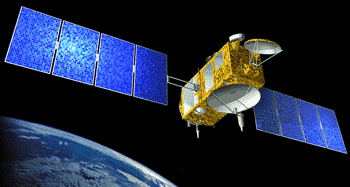

| News | |
| QuikScat | |
| NSCAT | |
| YSCAT | |
| SAR Research | |
| SCP | |
| CERS | |
| Jason-1 | |
| Publications | |
| Software | |
| Studies | |
| Lab Resources | |
| Group Members | |
| Related Links | |
| Contact Us | |
| Getting to BYU | |
The Jason-1 Project (1996) Jason is a NASA oceanography mission to monitor global ocean circulation, discover the tie between the oceans and atmosphere, improve global climate predictions, and monitor events such as El Nino conditions and ocean eddies. The Jason-1 satellite carries a radar altimeter and it is a follow-on mission to the highly successful TOPEX/Poseidon mission. It is joint mission between France and USA. The satellite was launched in May 2000. Click here if you would like more background information on NASA's Jason-1 mission. The Jason-1 project at the Brigham Young University MERS lab delt with finding the causes of the Electromagnetic (EM) bias in data received from the TOPEX/Poseidon and Jason-1 satellites and correcting the bias. The project was funded by NASA and headed by Dr. David Arnold, who, as a Ph.D. student at MIT, investigated the EM bias for his thesis. The EM bias problem is associated with measurements taken of the mean sea level. High frequency waves reflect from the troughs more than from the crests of ocean waves. Thus, the estimated mean sea level is usually lower than its actual level. This difference is called the EM bias. Correction algorithms exist that remove this bias, and are accurate to within 4 cm. The Jason-1 research project aims to provide an algorithm which will lead to even more accurate measurements -- to within 1 cm. There is evidence that the EM bias:
|
